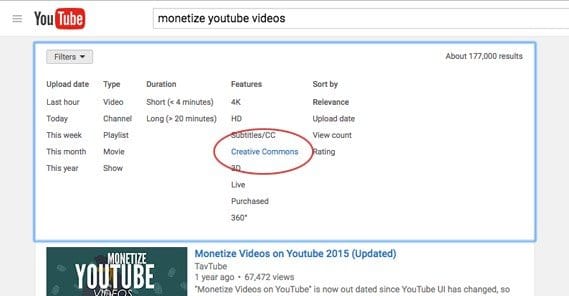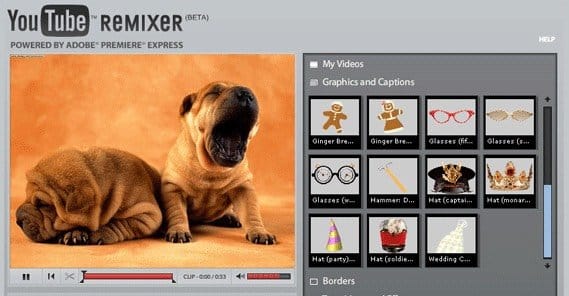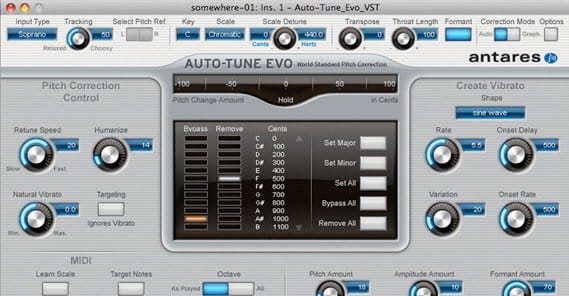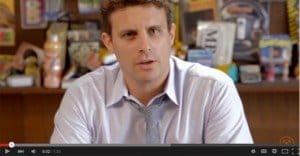How to Make Money on YouTube by Re-Uploading Videos

The primary way to use YouTube for marketing is to create videos representing your own content. You can take a blog post and convert it into a topic you can cover in a video, and do it in a compelling way, like the Moz Whiteboard Friday concept. Even if you’re not big into video production, you can use cartoons and animations, or even a simple Slideshare-style deck of slides with a voice-over. You can put as much or as little effort into it as you like.
The problem with this method is that it’s either slow, expensive, or both. It’s slow by default, since you need to come up with the concept, write the script, produce the video, produce the audio, clean up everything and edit it into a compelling final video, and upload it. All of that is work that takes place before you even have the chance to market the video and before you can gain a single cent out of it.
Any bit of the process, from the production to the editing to the acting, can be sped up by investing some money into it. The thing is, producing high quality videos for YouTube can cost a lot of money. At a moderate professional level you can expect to be spending between $5,000 and $20,000 per video, for videos that are only 1-2 minutes long. Obviously, this is a huge cost for a small business, and it’s not even the upper bound. Top level talent, high end filmmaking, modern CG and other “wow factor” aspects of video can double or triple that cost. Even all of that doesn’t come close to touching a low-end Hollywood budget.
There’s a method, however, that can cut your costs and your time investment significantly. I’ll tell you all about it, but first, I have to warn you.
The method I’m going to describe is not what everyone would label white hat. It’s not necessarily black hat, but it fades in around the middle of the gray area. It can be abused, and it can be taken all the way into illegal territory, but it can also simply be a time-saving method for a simple but mostly-white hat marketing plan.
I wouldn’t recommend using this method for a business you want to grow into the big leagues. It’s more like the kind of thing you use for microsites and affiliate marketing. It doesn’t work when you’re trying to build a brand, because it’s not necessarily the kind of content you want your brand name attached to.
The fact is, some of the resources available for this method straight up call it stealing. It’s not necessarily stealing, but it’s not entirely moral if you’re a puritan of the internet age. You’ll see why.
The Method Described
The method is pretty simple. The idea is to find videos that are free to use and remix, and use and remix them. Upload them back to YouTube under your own channel and monetize them. You cut out a lot of the effort involved with video production and, depending on how you use it, even scripting. At the most direct level, you simply take an existing video, download it, upload it to your channel, and monetize it. At a more complex level, you take videos and splice them together to make something new, overlay your own content on top, and turn it into a remix. To a certain extent, even big name YouTube producers do this, simply because it’s easier to get a hold of third party resources than it is to produce your own from scratch.
Now, you can see why the “stealing” label can apply, and you can see why it can be a black hat technique. If you take the wrong kinds of videos or use them in the wrong way, you can gain quite a negative reputation. Stay inside the rules and you can still make it through without a copyright strike or a suspension, but you’ll be skirting the line.
Finding Videos
Now, if you’re looking to put this method to use, the first thing you need to do is understand the types of videos you’re able to use. 99% of the time you’re not going to be picking any old video. It’s only when you’re going full black hat, full scammer, full thief that you’re going to take any video you like. This is definitely content theft and violation of intellectual property laws, which can get your account banned and even lead to legal action. For that reason, this is the most crucial part of the whole process.
What you’re looking for, if you haven’t guessed by now, is creative commons videos. Yes, videos can be released under the creative commons license; it’s not just for images on Flickr anymore.
You can find these videos on YouTube simply by running a search for a keyword or keyphrase you want to find. In addition to the keyword, add on “, creativecommons” to the search query. The comma is important; this is an additional parameter to the search. Anyone who has an account in good standing can mark their videos as creative commons videos, which publishes them under the relevant license. There are actually a dozen different variations on the single Creative Commons License, but for the most part they all have similar themes. You can read more about them on the creative commons website.
Additionally, videos in the public domain are available for you to use. This can be tricky to monitor, however, since the age of the video typically has to be decades, and you’re not going to find modern produced videos that fit that description.
Deciding a Path
Next you need to decide what path you’re going to take. You have two options, though really it’s more of a sliding scale than it is a binary choice. If you drew a line, the left side would be labeled “reproduction” and the right side would be labeled “remixing.”
Reproduction is simple. Find a video you like, that you think fits with your message, and download it. You don’t need to do much of anything to it, though. Simply upload the video again and use the YouTube annotation system to add your sales pitch. If you want to go a little deeper with it, you can use a simple editor – YouTube has such features built in – to add text to the video instead of relying on the annotations. Obviously, you’ll want to customize your video description as well, such that it reflects your sales pitch.
At the remix end of the scale, you need a more complex idea of what your goal is. This is my typical plan:
- Come up with a topic you want to cover.
- Write a simple script that covers the topic and provides information and a sales pitch.
- Find videos that can suit the topic in part; you’ll want 3-5 videos here.
- Stitch the videos together however you like to produce a coherent whole that fits with the narration you want to produce.
- Produce the narration and layer it over the top. You can do this in the YouTube video editor as well, there’s a separate track for audio.
- Render the final video and upload it to your channel. Or, if you’re using the built-in YouTube editor, you’ll want to customize the video to make the description, title, and tags stand out. Remove the “made with YouTube’s editor” keyword and make sure the video is listed publicly.
As you can no doubt see, this iteration is much more difficult and time consuming, but it’s also going to fall much more cleanly under the line of fair use. If you’re going for the content reproduction method, you’re at the whims of anyone who chooses to dispute your video. Unfortunately, YouTube’s algorithms are hard to deal with for publishers; they tend to favor the copyright holder, even when they’re wrong.
This is also a method that can step up and transition into more total video production. With the remix method, you’re creating your own original content, using some resources based in creative commons.
Monetization
Speaking of creative commons, there’s an issue you’re going to need to recognize here. You cannot use YouTube’s basic AdSense capabilities to monetize your videos here. There are only select subsets of the creative commons license that allow monetization. Most of them disallow it and further disallow making money through remixed works as well. In general, err on the side of caution and don’t enable monetization on any of these videos.
On the other hand, nothing bans you from using those videos to funnel traffic to your site. The idea is to use the videos to attract traffic, which will land on a customized landing page based on the video, which itself will do the selling. Technically, the video is not monetized, and that’s just the kind of technicality that rules these sorts of situations.
In some cases, when you use YouTube creative commons videos in your own content, the site will ask for more information. This is generally an automated flag attempting to make sure you’re aware of what you’re doing and to prevent actual stolen content. You will have to provide some information, including a link to the license of the original content creator and the name of the content, among other things.
This is why it’s recommended that you use affiliate offers for this sort of video, rather than sending viewers directly to your store. A storefront can trigger automated filters for the noncommercial types of creative commons content.
Recommendations for Success
Here’s what I typically recommend: work towards remixing as much as possible. Reproduction may be easy, but since it’s duplicate content, it’s going to be a lot harder to rank for the content since the original content creator still exists and their content has more weight in terms of time and engagement than yours. It’s hard to out-rank the original source of your content, right?
By opting for the remix, you can bring value to the table beyond just “hey look at this recipe I found.” You have more leeway with videos you can get from creative commons, and in how you use them.
Of course, again, this is going to take a while to get working. Remixing will take a bit of creativity of your own, and you’ll need to produce something with tangible quality and value.
With high end remixing, you’re essentially using creative commons videos as resources to provide a backdrop to your own original content. You can easily transition from there onwards to producing your own background content, and your own original content. This has the added benefit of allowing you direct monetization, since you’re creating the content.
Note that all of the options and restrictions for creative commons videos also apply to creative commons music. You can use music you have rights to use, even of those rights are creative commons. You can even create your own unique visuals and accompany them with creative commons audio.
Now, you’re going to be competing with a lot of high class content producers when you do any of this. YouTube is a pretty tightly packed market with a lot of people doing what they can to eke out a living. Worse, you’re positioning yourself at the low end if you go for the reproduction method. Have you ever seen a search where you get a bunch of identical results from different posters, all laced with annotations and links that all benefit the publisher of that iteration of video? That’s the kind of company you keep.
You need to pull yourself up and above to use YouTube effectively. Thankfully, once you get a few high quality freelancers on your team to write and produce videos, you’ll be able to get a lot of benefit out of doing so.
 ContentPowered.com
ContentPowered.com









Awesome stuff here, you gave me some nice ideas …
90% of the CC videos are actually under copyright law. It’s the youtube user who posts it as copyright, doesn’t mean it’s not owned 🙂
Nice share, but after reuploading the videos the end result videos will be Creative commons video or will be just for me?
This doesn’t seem to work. Perhaps Youtube put in measures recently to stop it? Every time I try to upload a video (and yes, I’ve made 110% sure they’re CC licensed videos – I’ve followed all the steps explained above, and have checked, double-checked and re-checked that I’m doing it just as described) Youtube gives me a copyright violation notice at about the 90% mark when it’s processing the uploaded video, scraps the upload, and wont let me continue or publish the video.